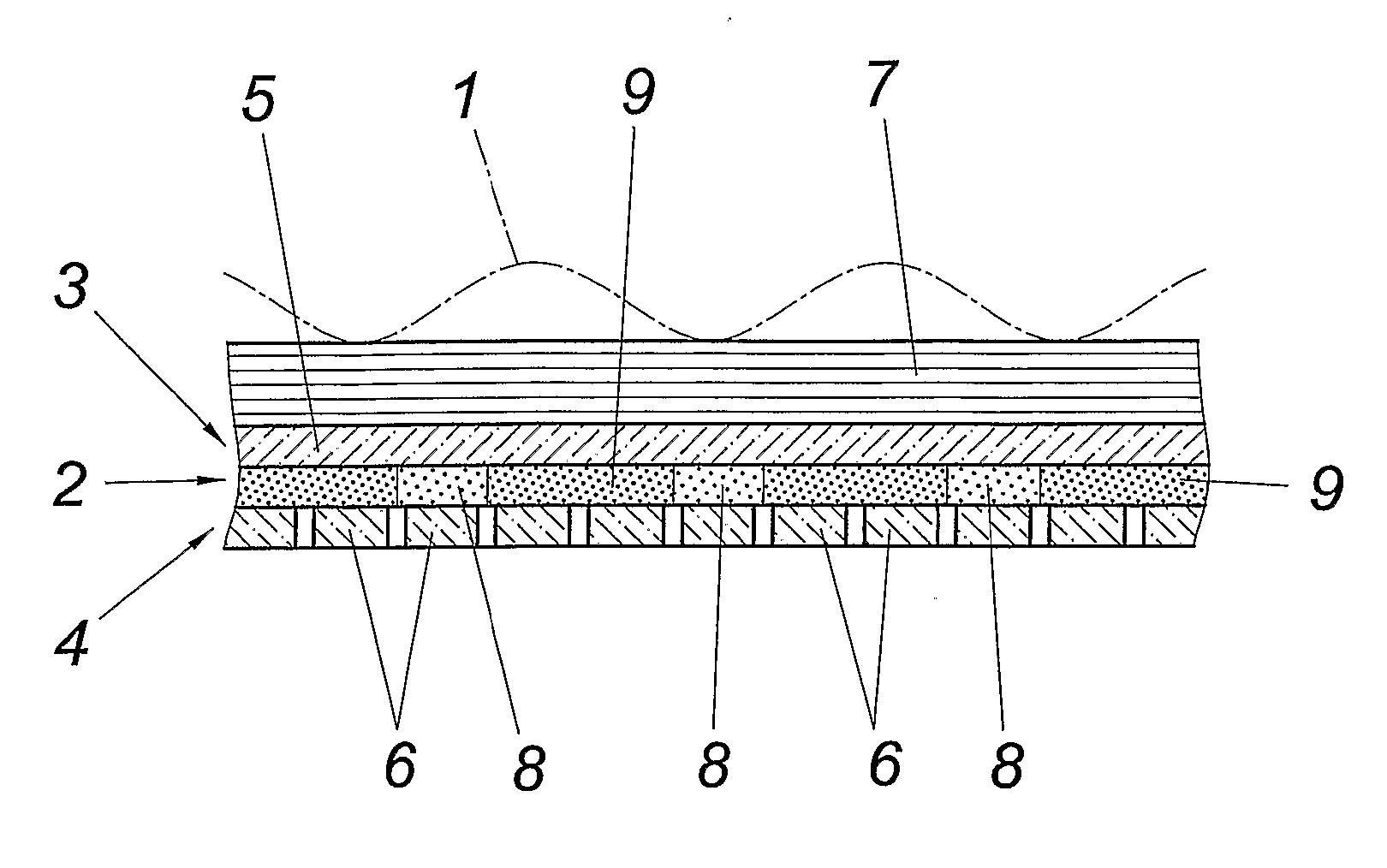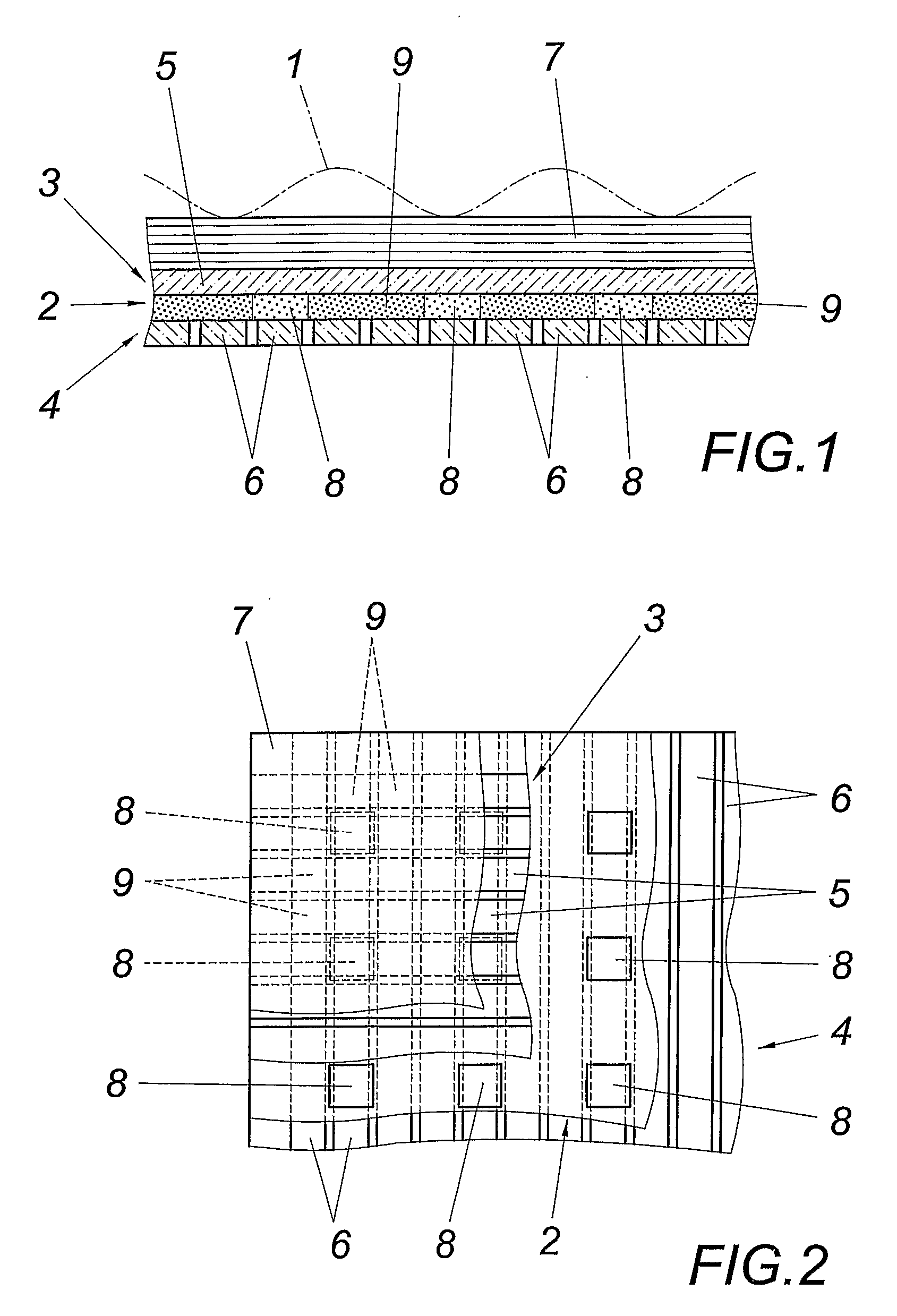Fingerprinting Device
- Summary
- Abstract
- Description
- Claims
- Application Information
AI Technical Summary
Benefits of technology
Problems solved by technology
Method used
Image
Examples
Embodiment Construction
[0013] As may be seen, in particular, in FIG. 1 and 2, the illustrated device for recording a fingerprint 1 indicated in FIG. 1 by a broken line has a photoactive layer 2 adjoined by two electrode layers 3, 4 consisting of intersecting strip conductors 5, 6. The photoactive layer 2 is constructed on the basis of organic semiconductors, the charge movability of which parallel to the layer face is comparatively small, thus producing photoactive elements substantially separated from one another in the region of intersection of the strip conductors 5, 6. In order to be able, on the one hand, to illuminate the fingerprint 1 through a translucent top layer 7 forming a finger rest and, on the other hand, to detect the light reflected diffusely on the fingerprint 1 for imaging the fingerprint, individual regions of the photoactive layer 2 that are locally defined by the region of intersection of specific strip conductors 5, 6 are used as light-emitting elements 8 and the remaining regions a...
PUM
 Login to View More
Login to View More Abstract
Description
Claims
Application Information
 Login to View More
Login to View More - R&D
- Intellectual Property
- Life Sciences
- Materials
- Tech Scout
- Unparalleled Data Quality
- Higher Quality Content
- 60% Fewer Hallucinations
Browse by: Latest US Patents, China's latest patents, Technical Efficacy Thesaurus, Application Domain, Technology Topic, Popular Technical Reports.
© 2025 PatSnap. All rights reserved.Legal|Privacy policy|Modern Slavery Act Transparency Statement|Sitemap|About US| Contact US: help@patsnap.com



